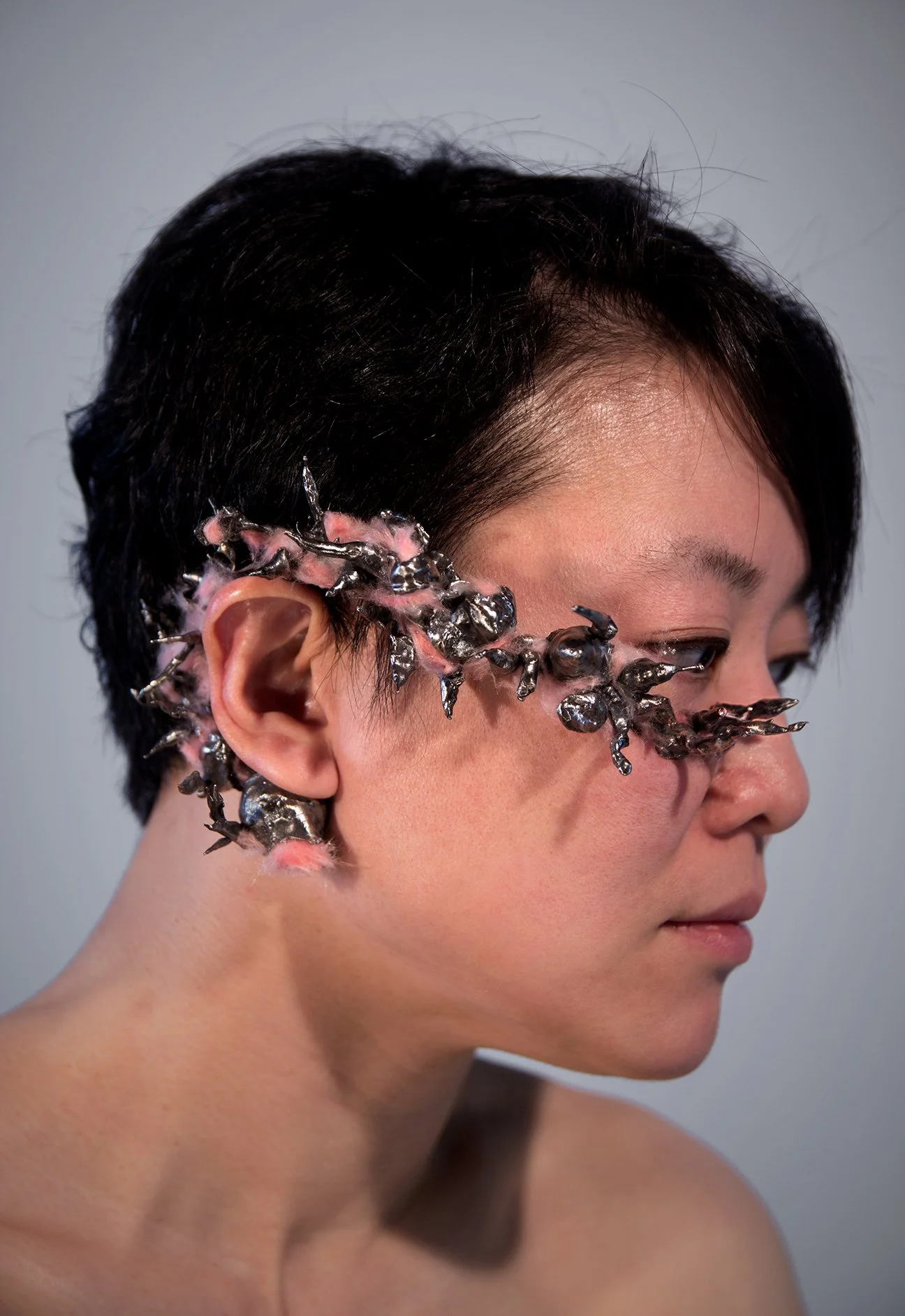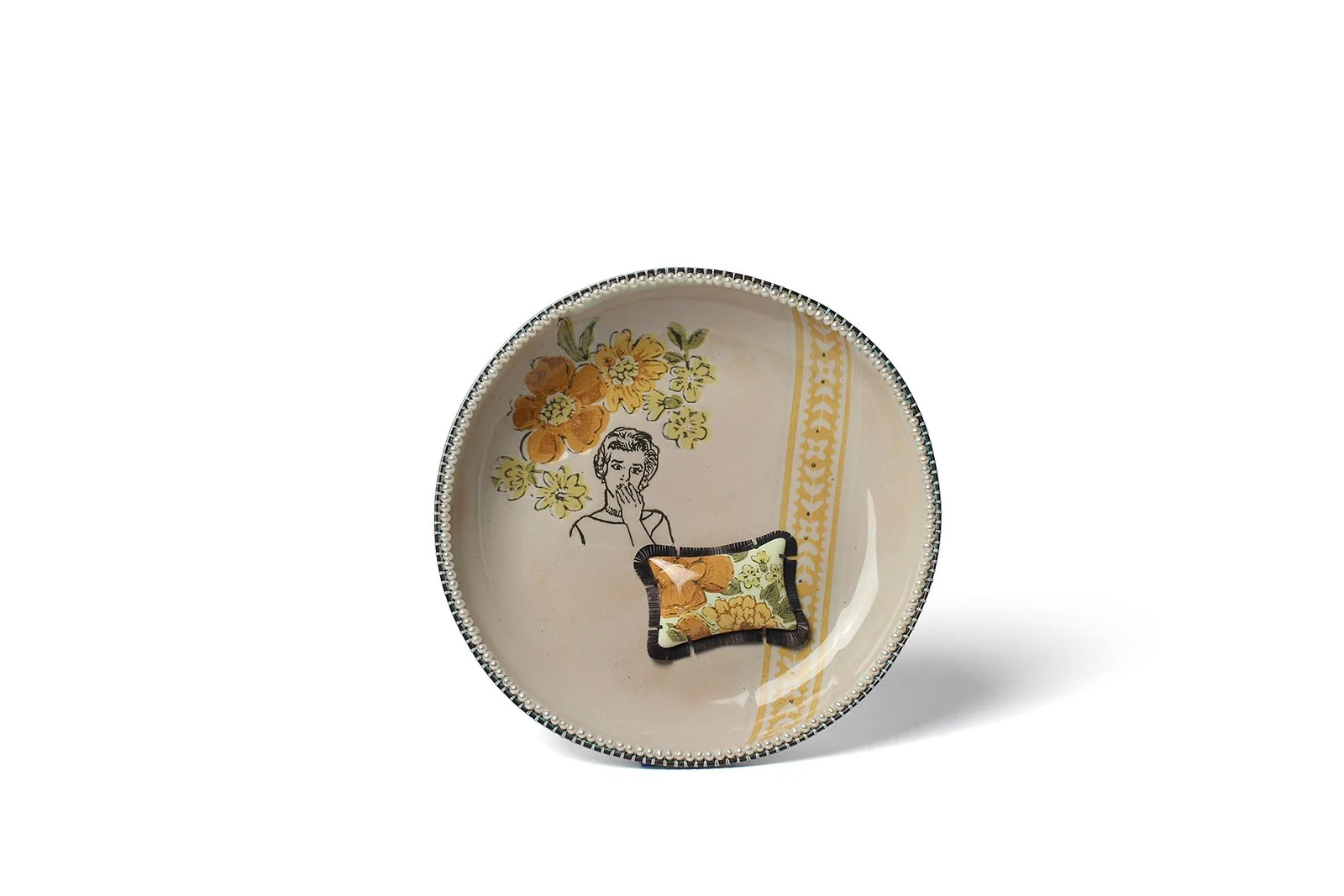
micro/MACRO
Bowling Green State University
Isabel Zeng
MFA Candidate
Gazed Gazes (object of artwork), 2019
Sterling silver, fiberglass
“Gazed Gazes is a wearable object which connects the ear and eye of the wearer. It can be seen as a body extension, in particular, a visual form of the body’s inner reaction in response to external factors, such as male gaze.”
Stephanie Robbins
BFA Candidate
Statement Necklace, 2019
Copper, aluminum, glass, dried flowers, UV resin, red agate
“The Statement Neckpiece plays with scale, negative space, and expectations of the viewer with regard to the stone-setting format. With one exception, the prong set cabochons are living creatures – plants – through which the wearer’s body appears in negative space, becoming part of the ornament. The macrocosm of life is invoked in the diminishing circles of the microcosm of the set jewels.”
Marissa Saneholtz
Faculty
Her point had been made, but had it been worth the cost?, 2019
Copper, vitreous enamel, silk, pearls, sterling silver
“Current politics and the dawning realization that ignorance is prevalent in our country has caused me to view people from our country in a new light. This body of work is a reflection of some of the shame that I am currently feeling at my inability and lack of effort to create change for the better. As an individual, it is difficult to determine what actions can be taken that can help to move our society in the right direction while still taking care of our own personal lives and relationships.”
Tom Muir
Faculty
Beekeeper’s Neckpiece, 2019
Walnut, drawn beeswax, comb, cord, brass
“The Beekeeper’s Neckpiece is a jewelry counterpart to Richard Avedon’s provocative Beekeeper photograph. Like Avedon’s image, the neckpiece suggests both the danger of wearing live bees, and the fascination with being physically close to them, even serving as a living structure for their activities. In both images, part of the fascination stems from the constantly changing arrangement of the bees; in the neckpiece, which is the natural shape of drawn comb inside a beehive, the bees behave as they would in the hive. The neckpiece is both a microcosm of the superorganism that is the beehive – and, when worn with due care and respect, a microcosm of the natural order seen from a non-anthropocentric vantage point.”





